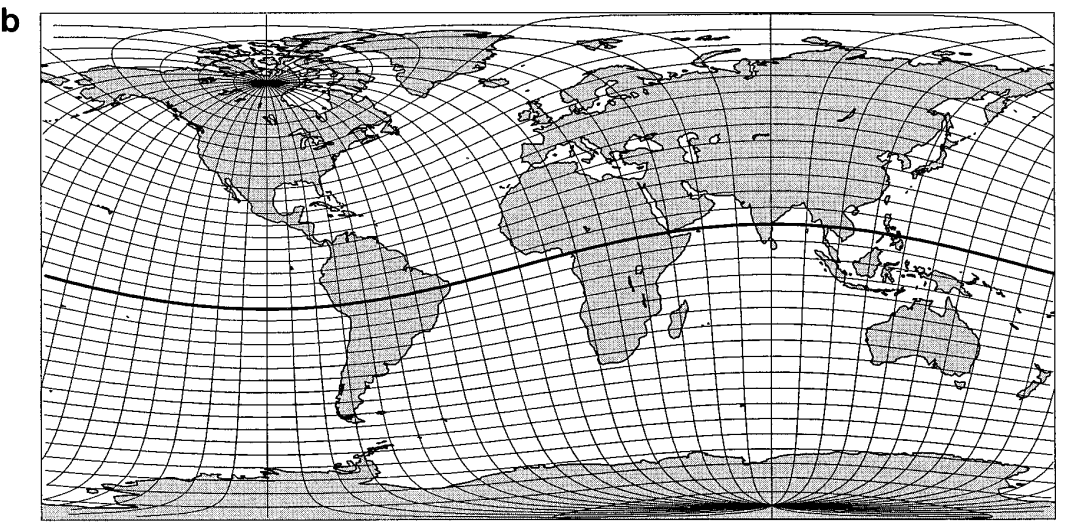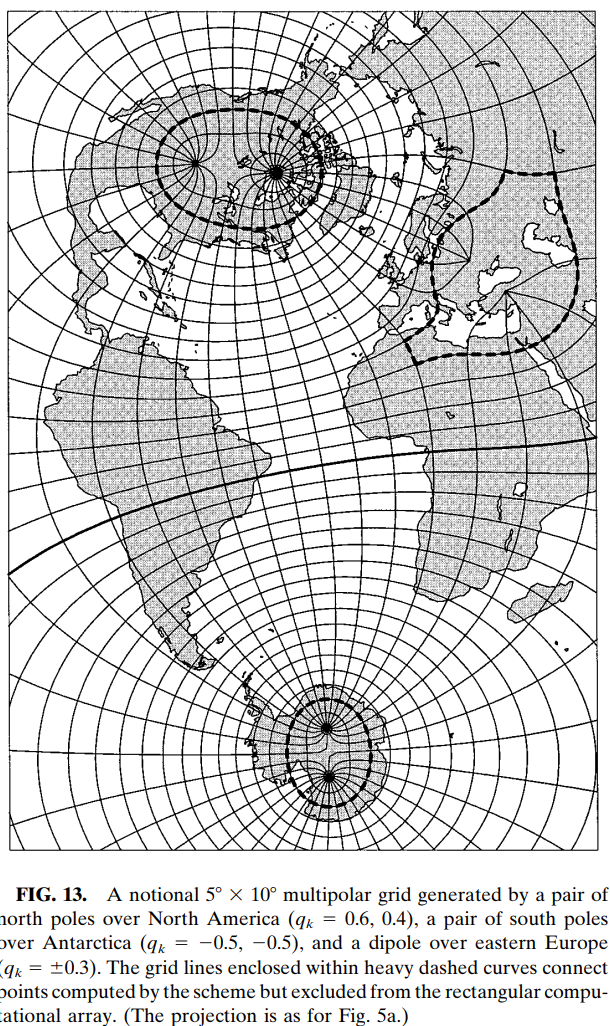Explicit Generation of Orthogonal Grids for Ocean Models
p.251
ː The convergence of meridians at the North Pole has been a source of numerical difficulties in ocean modelling that have never been satisfactorily resolved.
p. 252-253 ː properties that are of greater value in a global ocean grid; the chief of these would be the following: 1. Orthogonality... 2. A slow variation of grid spacing along grid lines... 3. A moderate overall range of grid spacing... 4. An absence of singular behaviour over the ocean
p. 257
ː  FIG. 5. The coordinate lines of a 58 3 108 bipolar grid generated about poles 1608 apart at 658N, 1008W and 858S, 808E: (a) oblique Mercator projection (heavy dashed lines indicate the geographical equator, prime meridian, and 908 meridians), (b) cylindrical equidistant projection. The
grid equator in each diagram is indicated by a solid bold line.
FIG. 5. The coordinate lines of a 58 3 108 bipolar grid generated about poles 1608 apart at 658N, 1008W and 858S, 808E: (a) oblique Mercator projection (heavy dashed lines indicate the geographical equator, prime meridian, and 908 meridians), (b) cylindrical equidistant projection. The
grid equator in each diagram is indicated by a solid bold line.
p. 265-267
ː In the present study the aim has been to keep all singular points well away from the ocean domain. With an increase in their number this might be difficult (a cubic mapping would have eight)... There is no particular reason why the poles should be placed 1800 apart; the only requirement is that they be equal and opposite.
ː 
p. 273
- The author thanks Dr. A. C. Hirst... and Dr. I. Simmonds